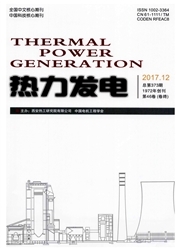

 中文摘要:
中文摘要:
我国每年产生大量的废弃脱硝催化剂,其安全处置和资源化利用迫在眉睫。钒钛脱硝催化剂中的TiOz含量较高,以其作原料制备陶瓷,可实现高附加值利用。本文以包头某火电厂的蜂窝式废弃钒钛脱硝催化剂为原料,选取CuO、硼砂、Nb2O53种外加剂用于制备钛基陶瓷,通过样品体积密度、吸水率、抗压强度、抗弯强度、维氏硬度和有毒元素浸出率测试,研究3种外加剂对钛基陶瓷性能的影响。结果表明:CuO的掺杂不利于样品的致密化,掺杂2%硼砂可大幅度提高样品硬度:掺杂2%Nb205的样品综合性能最佳,有毒元素浸出率达到国家标准:利用以废弃钒钛催化剂为原料高温焙制陶瓷的方法,对有毒V元素的浸出起到了明显的固化效果。
 英文摘要:
英文摘要:
Large amount of abandoned denitration catalysts are produced in China every year, the safety dispose and resource utilization of them becomes urgent. The TiO2 content in vanadium titanium denitration catalyst is critically high, which could be used as raw material for ceramic preparation to realize high value-added utilization. In this paper, the waste vanadium titanium denitration catalyst from a coal-fired power plant in Baotou was used for raw materials for preparation of titanium base ceramic, and the CuO, borax and Nb2O5 were used as admixtures. Through the tests of volume density, water absorption, compressive strength, bending strength, Vickers hardness and leaching rate of toxic elements, the influence of admixtures was studied. The results show that, the CuO doping went against the samples' densification, doping borax with concentration of 2% improved the sample hardness sharply, the 2% Nb205 doped samples performed the best, of which the leaching rate of toxic elements reached the national standard. The high temperature heated method using waste vanadium titanium denitration catalyst as raw materials has an obvious effect in solidification of the toxic V elements.
 同期刊论文项目
同期刊论文项目
 同项目期刊论文
同项目期刊论文
 期刊信息
期刊信息
